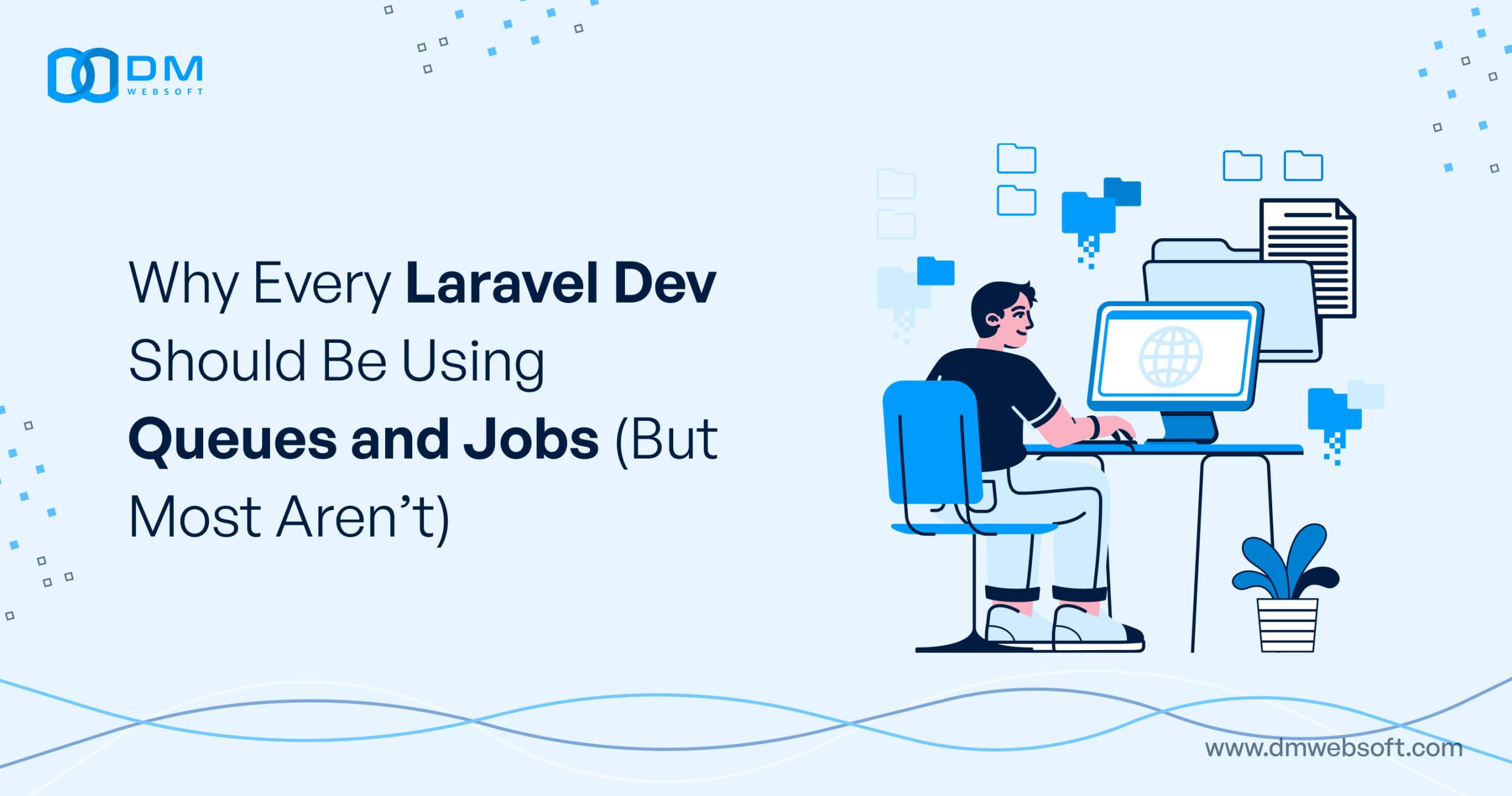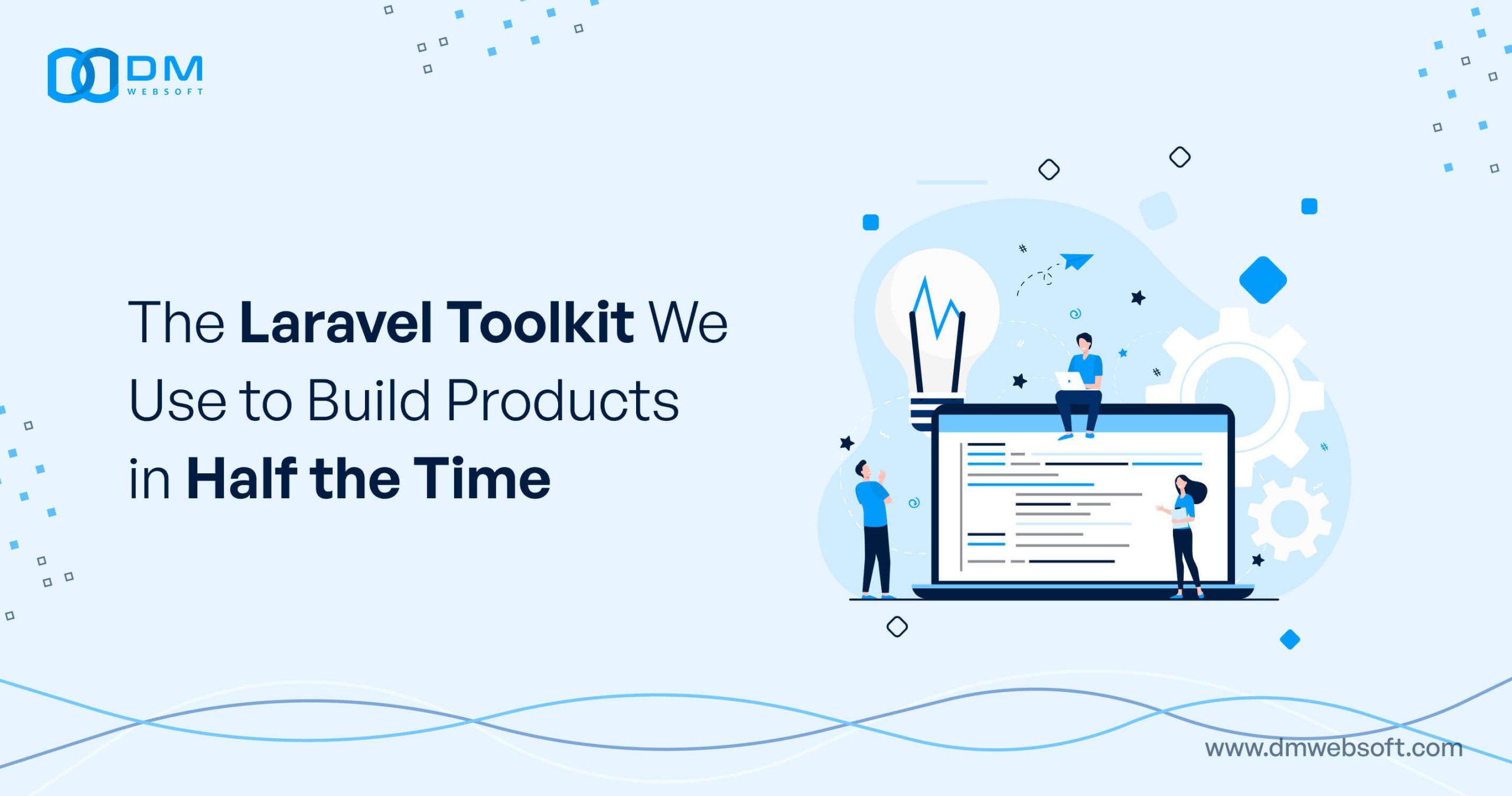DM WebSoft LLP exceeded our expectations! Their seasoned team of experts delivered a website that perfectly captures our brand essence. Their 15+ years of experience truly shine through in their exceptional web development skills.
The Great Tech Detox: Companies Making Millions by Going Low-Tech

TABLE OF CONTENT
Introduction
The Rise of Analog Experiences in a Digital World
Tech-Free Wellness: How Simplicity Sells in the Wellness Industry
How Businesses Can Profit from the Low-Tech Movement
The Future of Low-Tech Business Models
The Psychological Appeal of Low-Tech: Why Consumers Are Drawn to Simplicity
How Businesses Can Transition to a Low-Tech Model Without Losing Efficiency
Low-Tech in the Workplace: How Companies Are Redefining Productivity
Conclusion: Why the Low-Tech Movement is Here to Stay
Get in Touch
Introduction
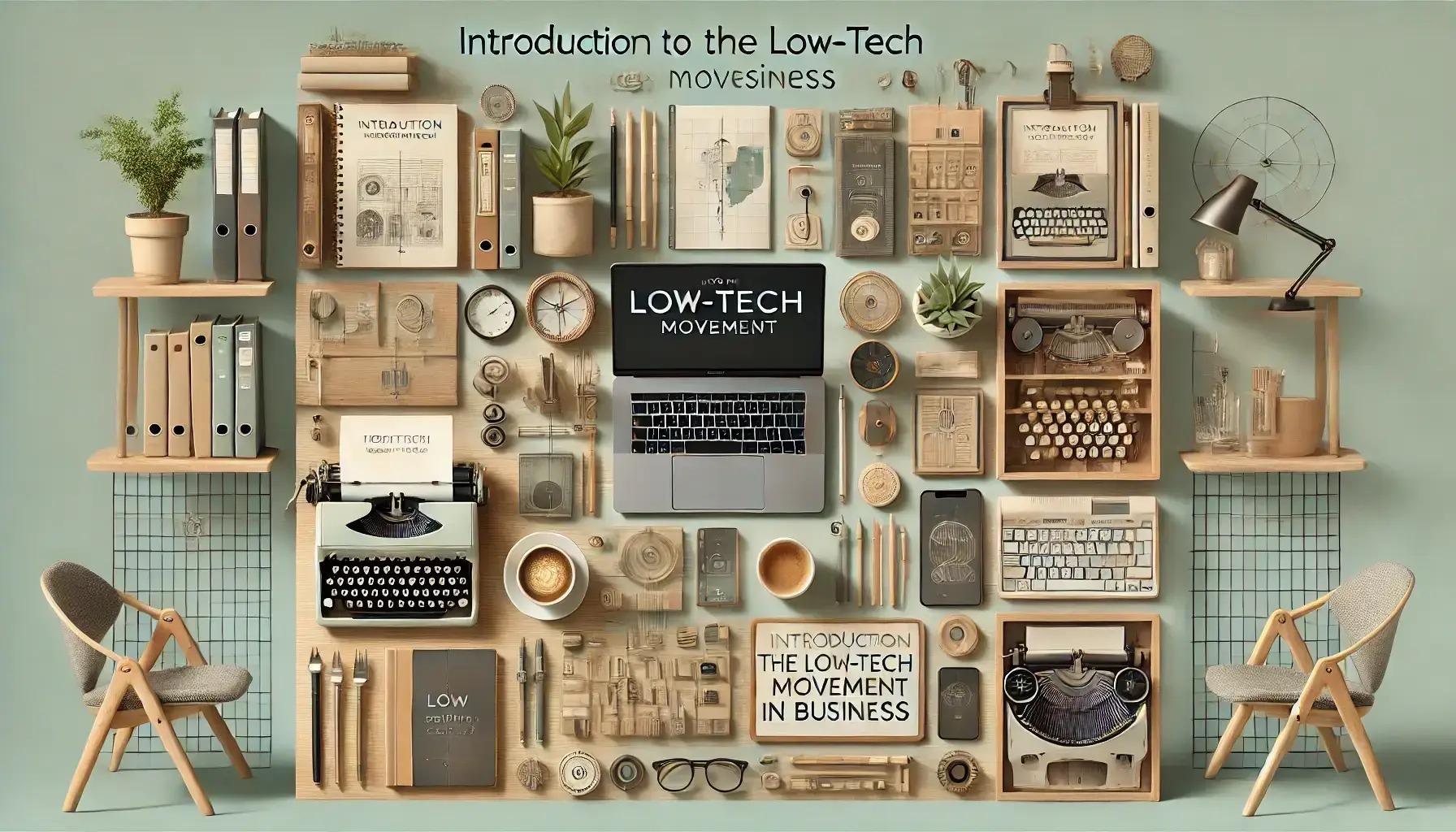
In an age when technological change is reshaping nearly every industry, a counter-movement is emerging—one that might seem counterintuitive in the era of AI, automation, and smart technology. Some companies are intentionally going low-tech and earning millions in the process. While most businesses are heavily investing in cutting-edge innovations, a select few are deliberately scaling back, embracing simplicity, traditional craftsmanship, and genuine human connection. This shift isn’t about rejecting technology altogether but rather using it selectively to enhance—not replace—real-life experiences.
Today’s consumers are experiencing digital exhaustion—constant notifications, algorithm-driven interactions, and an always-on virtual presence. As a result, there’s a growing demand for real, hands-on, and screen-free experiences, creating a lucrative market for brands that prioritize intentional simplicity. From vinyl records and analog photography to handmade goods and tech-free wellness retreats, businesses that embrace thoughtful minimalism are thriving.
This blog talks about how companies are developing multimillion-dollar brands with a low-tech approach, leveraging consumer aspirations for genuineness, real-life interaction, and analog experiences. At DM WebSoft LLP, we help businesses navigate shifting market trends—whether it’s leveraging AI for efficiency or capitalizing on the profitability of human-focused simplicity. The low-tech revolution is proving that sometimes, less technology leads to greater success.
The Rise of Analog Experiences in a Digital World
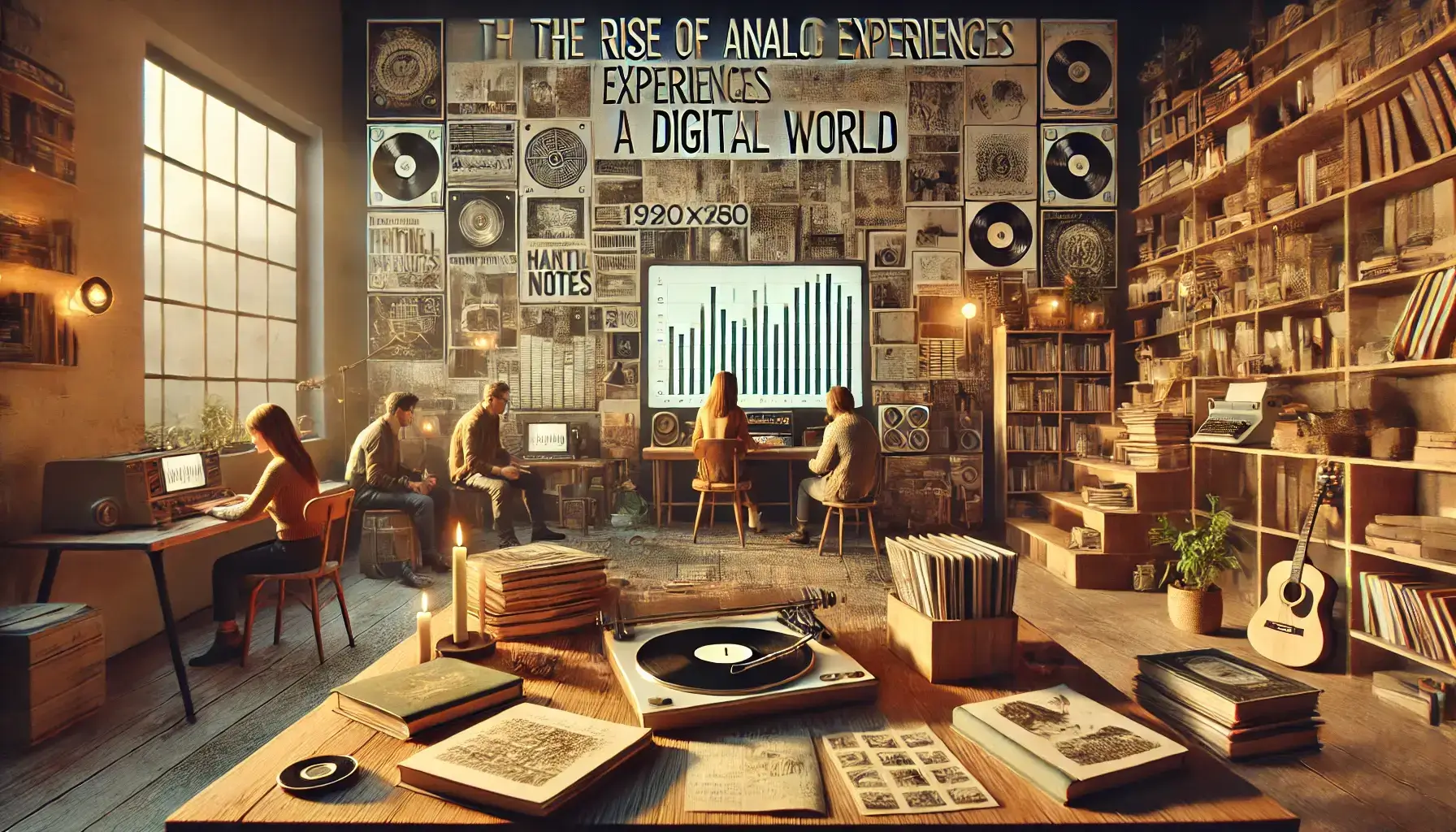
For decades, businesses have rushed to introduce new technology, with the hope that added automation and ease in a virtual environment will assure success. But an increasingly larger group of companies is finding that analog experiences have enormous value—and in most instances, even outperform their virtual counterparts in terms of profit.
One of the most striking examples is vinyl record’s renaissance. With streaming platforms offering access to an infinite variety of music at a touch, vinyl experienced an unprecedented renaissance in 2023, when vinyl sales outpaced CD sales for the first time in years, sparking a boom in demand for independent record stores and vinyl pressers.
But the draw isn’t about sound alone—it’s about listening to a record, about having an album in your hands, and about a deeper, almost primal, relation with sound. Consumers are showing that they will pay a premium for sound and for nostalgia, even when a less expensive, convenient alternative in a digital format is an option.
A similar phenomenon is happening with film photography. With smartphones having reduced photograph taking to a matter of ease, many have fallen in love with film for its rich textures, individuality, and thrill of seeing developed photos. In a nod to such a phenomenon, companies including Kodak and Fujifilm have restarted their film operations to cater to an ever-growing base of enthusiasts for whom intentionality takes over immediate feedback.
Beyond entertainment, demand for both artisanal and handmade items is on the rise, as well. Patagonia, Everlane, and Etsy, for example, survive and flourish through ethics, craftsmanship, and durability over high output volumes. Consumers increasingly care about value over quantity, choosing items that will last, have a story, and speak to them at a values level.
This renewed appreciation for analog and real-life experiences is a deeper reflection: technology optimizes efficiency, but humans crave brands with humanity, with depth, and with authenticity. Brands that grasp this shift are embracing a desire for simplicity—illustrating that sometimes less technology can actually mean the smartest path to success.
Tech-Free Wellness: How Simplicity Sells in the Wellness Industry
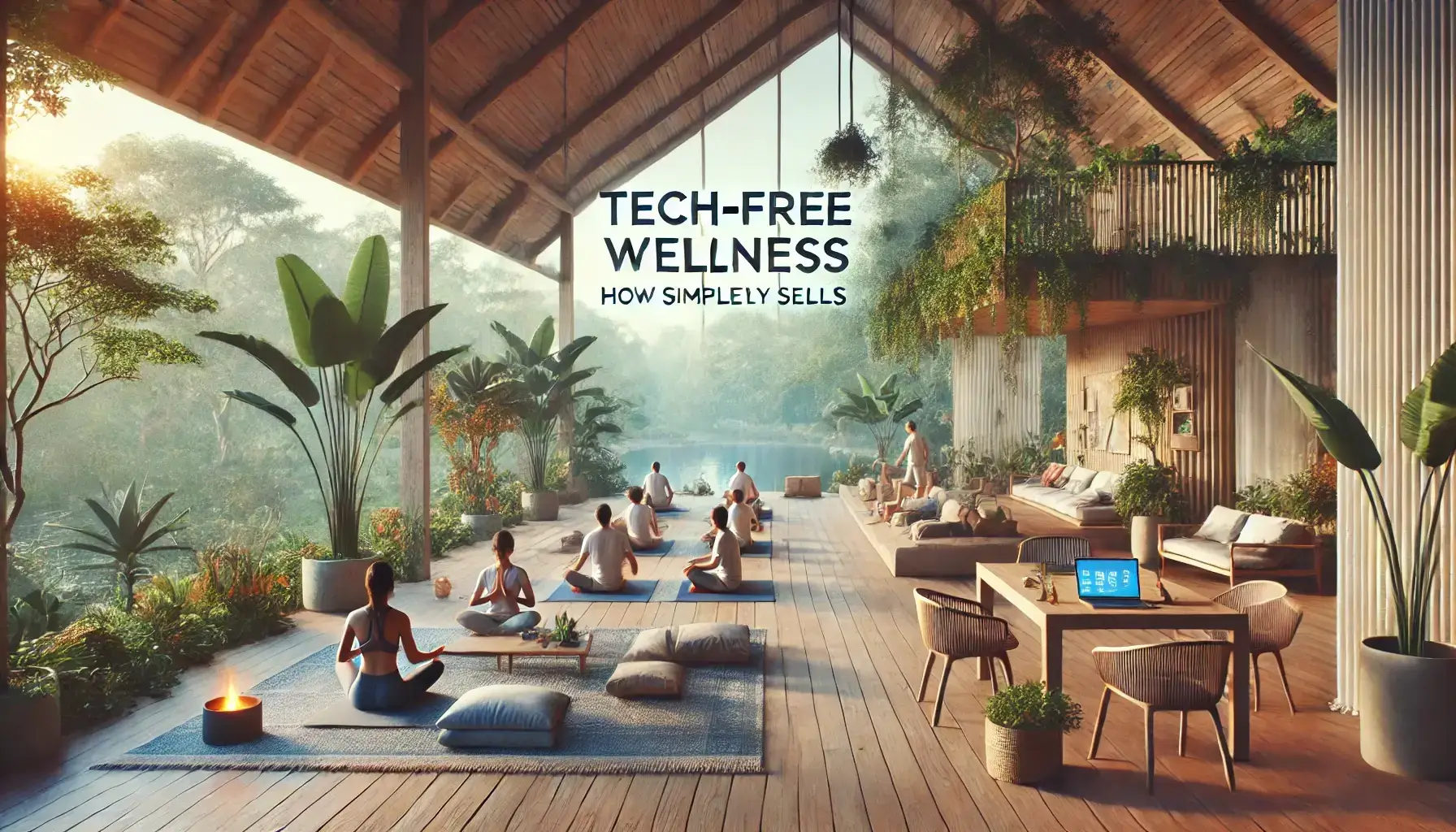
The wellness sector has long been characterized by innovation, self-care, and whole-person wellness, but over the past decade, an interesting development has taken shape—a new demand for low-tech wellness options. As humans grapple with technology burnout, tension, and information overload, many have moved away from high-tech fitness programs, AI-powered wellness trackers, and algorithm-inspired wellness guidance towards less complex, technology-free wellness experiences. Companies that have noticed this development are earning millions providing real, concrete, and technology-free wellness experiences.
One of the most profitable industries in this trend is digital detox retreats. Luxury resorts, wellness retreats, and ecotourism resorts have started positioning themselves as tech-free retreats, welcoming guests—if not requiring them—to switch off, log off, and indulge in real-life downtime. Getaway House, Unplugged Cabins, and high-end ecotourism resorts sell high-ticket off-grid, nature-filled experiences that enable visitors to refresh minds and reconnect with reality. What these companies are finding out is that the ultimate luxury isn’t new technology—it’s being completely unplugged.
Fitness and exercise brands are booming, too, with a simple model. With smart fitness and fitness trackers dominating, many consumers have gone in a counterintuitive direction, opting for low-tech, back-to-basics exercise with a strong emphasis on human contact over technology tracking. Outdoor fitness groups, yoga studios, and stripped-back fitness programs are becoming increasingly popular with an emphasis on bodyweight exercise, mindful motion, and training in and with nature, unencumbered by technology and smart device distraction. Brands including P.volve and Bala have built multi-million-dollar companies with low-tech, high-performance fitness options with a strong emphasis on purposeful motion over technology tracking.
The beauty and skincare industry embraced the low-tech wellness trend, shifting towards organic, organic, and handcrafted offerings and away from high-tech beauty tools and AI-facilitated skincare routines. Consumers no longer believe in high-tech skincare, and opt for small, responsibly produced companies with a preference for simplicity, transparency, and sustainability in ingredients. Lush, Tata Harper, and Herbivore have exploited such a shift, and have seen that work and authenticity sell, and not technology-facilitated beauty trends.
The success of technology-free wellness is a lesson for business: sometimes, and increasingly, and in many cases, consumers don’t crave more technology, more information, and more automation, but a balance, presence, and real-life experiences that make them feel grounded. Business leaders who grasp this shift and prioritize simplicity, genuineness, and humanity will thrive in an economy in which less technology brings more profit.
How Businesses Can Profit from the Low-Tech Movement
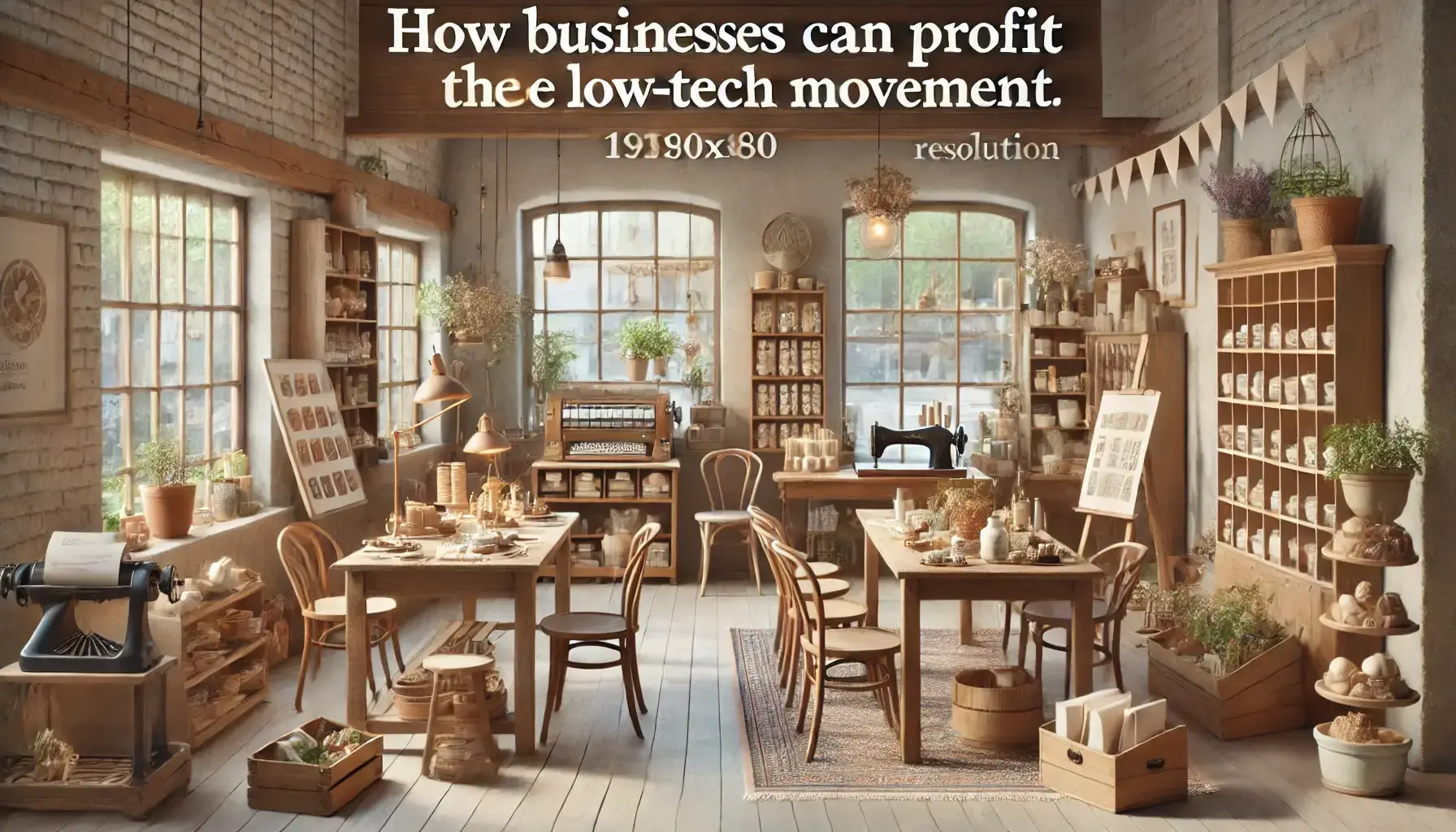
The success of low-tech companies proves that simple works—but why? What about such companies is profitable? Strategical minimalism is the key, in which companies expertly combine efficiency and authenticity in a form that creates high-value, premium experiences. With such a strategy, companies can demand a price premium, develop strong, loyal followings, and differentiate in an over-teched marketplace.
One of the most significant financial advantages of the low-tech model is its potential for premium pricing. By emphasizing analog, small-run, or handmade work, a business can create an aura of scarcity and high value. Customers will pay a premium for a product with a connotation of scarcity, personality, and high level of work involved in its creation. For example, high-end stationery producer Moleskine can price its notebooks at much higher price points than commoditized equivalents—not necessarily for being high-tech, but simply for being a premium, ageless, and beautifully crafted experience.
Beyond pricing, emotion and narrative contribute a lot towards low-tech brands’ profitability. Brands that honor heritage, craftsmanship, and stewardship resonate with buyers who value ethics, integrity, and quality over cheap, high-volume production. Brands that value responsibly harvested materials, fair processes, and community-based business models develop loyal followings that extend far beyond the product itself. Patagonia, for instance, grew a multi-billion-dollar brand through its advocacy for environmentally friendly production and slow, long-lasting apparel.
Another major contributing factor to low-tech companies’ financial success is that such companies can have high-value offerings and yet maintain low operational expenses. By having simple production, less AI-powered automation-dependent, and focused in high-value, high-quality offerings, companies can enjoy efficient, profitable operations with high-margin pricing. Handcraft and artisanal companies, for example, forego bulk production and algorithmic marketing expenses and earn through mouth-to-mouth endorsements and organic fan base creation.
Additionally, the low-tech economy thrives in scarcity and limited availability, creating high demand for limited releases. Products in small runs or in-season drops build anticipation and urgency for buyers, and in most cases, sell out in a matter of minutes. Vinyl record sales, for example, consistently issue limited-edition releases, and collectors pay a premium for them. That scarcity model creates perceived value, taking simple, concrete items and making them covetable goods.
At DM WebSoft LLP, we help companies make a transition towards high-value, meaningful experiences for consumers, whether through intentional AI integration or unlocking value in low-tech simplicity. What succeeds for brands that have transitioned out of addiction to technology proves that, in most cases, becoming low-tech isn’t necessarily a nostalgic act—but a successful model that resonates with today’s consumers at a deep level.
The Future of Low-Tech Business Models
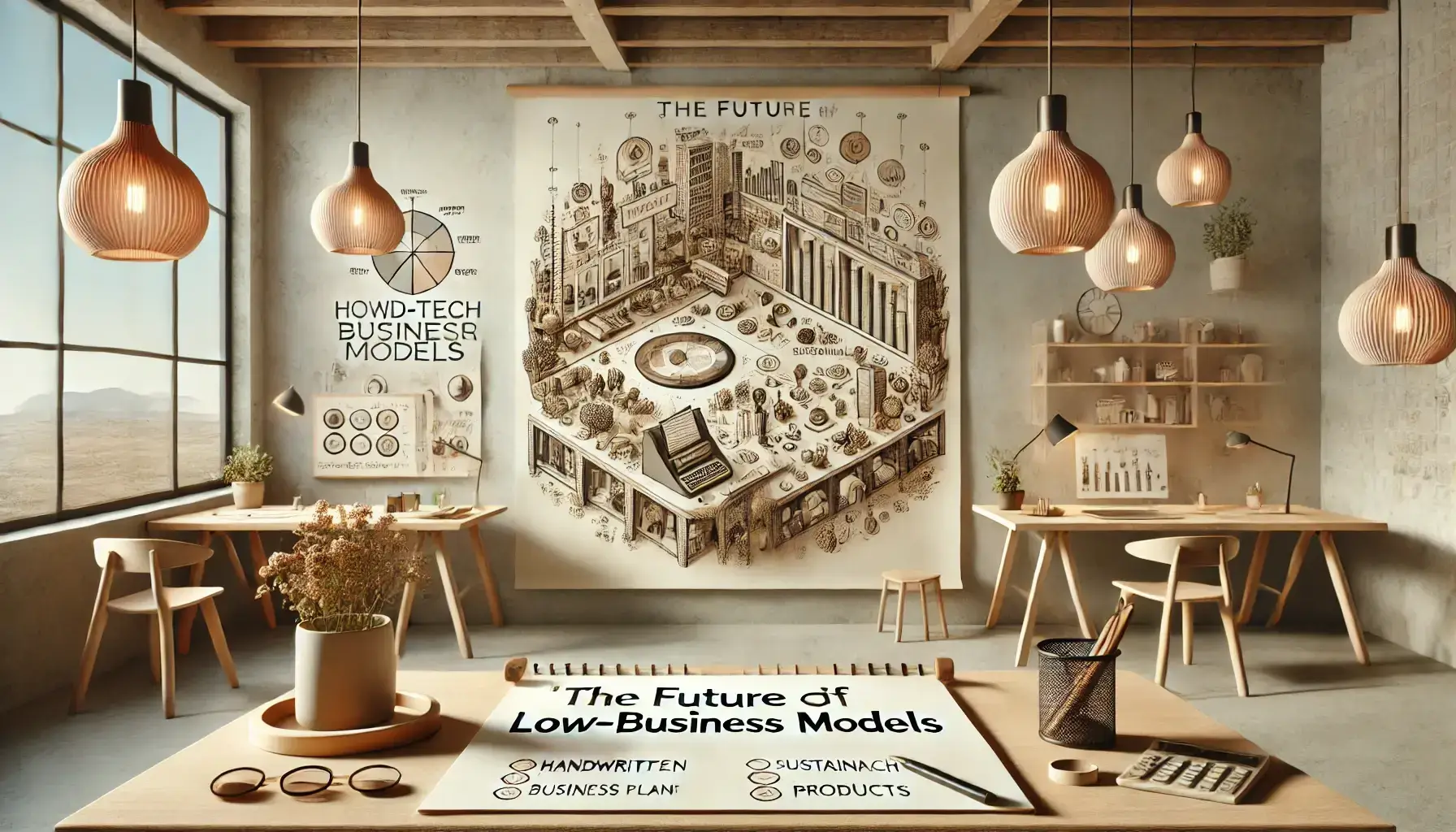
As technology continues to develop at an unprecedented pace, the low-tech movement isn’t a fad but a new behavior for consumers. Consumers increasingly desire authenticity, simplicity, and hands-on experiences, and companies will have to redefine their strategies. Those companies that apply selective use of technology but value experiences for humans will thrive, and not everything new necessarily must involve technology in order to have value.
One of the biggest indicators of long-term demand for low-tech alternatives is mounting disdain for constant digital activity and automation. Consumers increasingly comprehend and resent screen addiction, data security concerns, and algorithmic decision-making, and actively seek out offline experiences for that reason. As a result, industries long defined by digital transformation—media, retail, and hospitality, for example—now have increased demand for in-person experiences, analog alternatives, and personalized service.
The future of low-tech business will most likely include a combination of strategies, with companies balancing technology in a way that complements and enriches, but doesn’t dominate, the customer experience. Bookstores, for example, are thriving, not in a rejection of e-commerce, but in providing in-person experiences that can’t be delivered through platforms. In a similar manner, companies employing traditional, handmade, and ethical production can utilize digital marketing to sell them, but the actual product will have its origin in real, actual, and authentic quality.
Additionally, sustainability and responsible consumption will increasingly drive the low-tech model. As environmentally aware, consumers will choose brands prioritizing long-lasting, mending, and responsibly crafted goods over single-use, technology-enabled alternatives. Patagonia, Everlane, and Shinola’s success is a demonstration that slow production and responsible work can at least, and possibly even, be more profitable than high-volume production.
Perhaps the most exciting aspect of the low-tech revolution is its ability to redefine work life and business processes. Some companies have started shifting towards less complicated, less distracting work settings, and have embraced such philosophies as no-meeting days, limited use of email, and technology-free brainstorms in a bid to maximize productivity and creativity. Organizations that build less complicated, less stressful work environments will not only recruit best talent but will boost productivity and workplace happiness.
At DM WebSoft LLP, we make it possible for companies to transition to new trends in consumption, whether through AI-facilitated strategies or through the leveraging of value in simplicity. Business in the future isn’t about technology over traditional, but about finding an ideal harmony between both. Those companies that understand that harmony will not only survive but will thrive in an ever-changing environment.
The Psychological Appeal of Low-Tech: Why Consumers Are Drawn to Simplicity
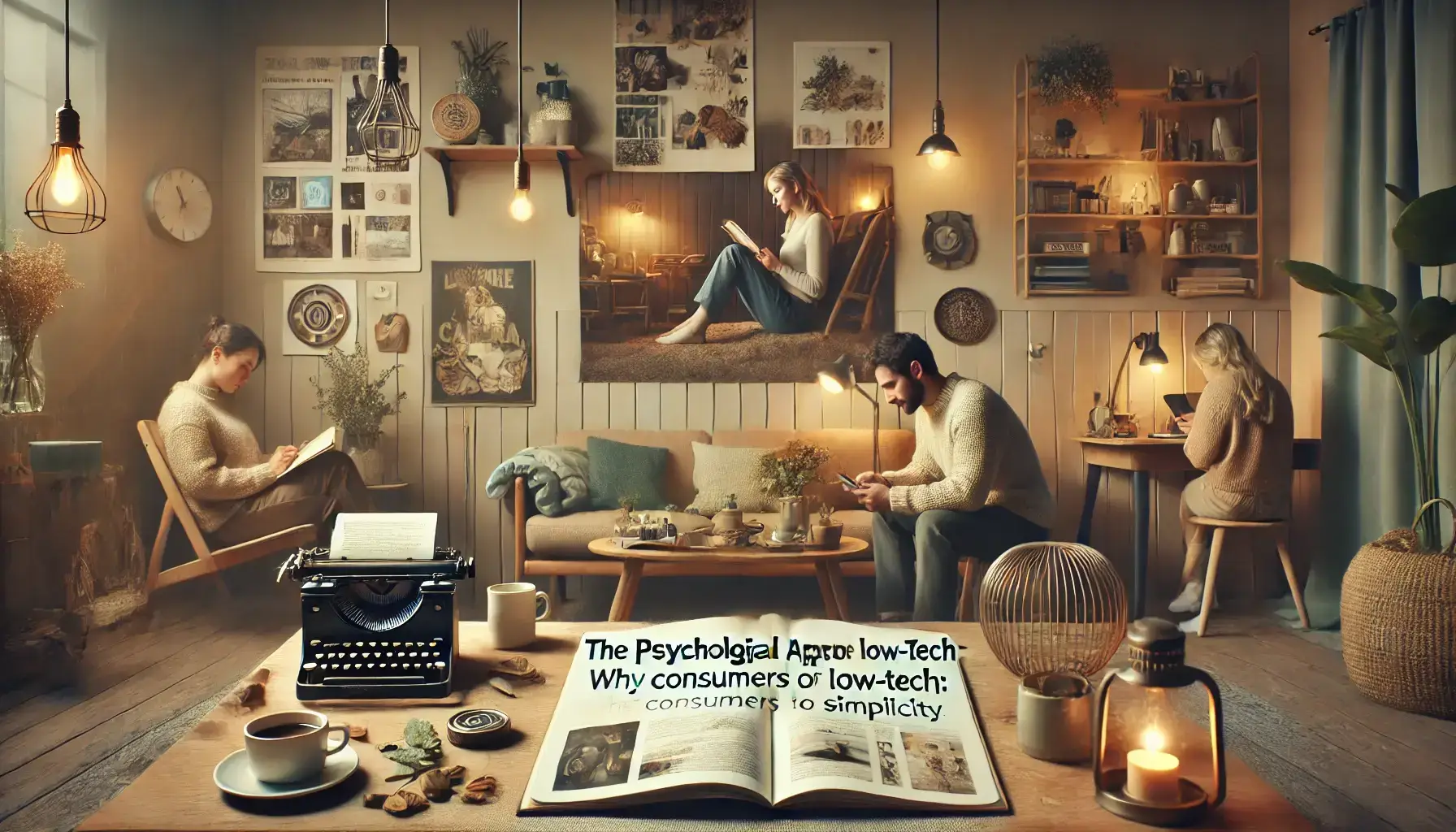
One of its biggest contributing factors towards success is psychological in origin, with drivers for consumption behavior. As technology continues to become a part of everyone’s life, humans face mental overload, virtual burnout, and disengagement with reality, and in consequence, a demand for simplicity, consciousness, and hands-on experiences, creating an economic opportunity for companies providing such a switch.
One key issue is heightened burnout in an age of technology. With social media, constant notifications, and algorithm-enforced consumption, many view a state of constant distraction and overload. In response, technology-free experiences become a source of refuge and mental rejuvenation, and vinyl, printed books, and calendars become go-to options. Unlike efficient substitutes in a digital form, analog experiences allow for a slow, considered encounter, one that can be profoundly satisfying.
Another reason for low-tech goods’ growing popularity is hands-on contact’s psychological draw. According to studies, actually touching an object—e.g., writing in a book, holding a book, wearing a mechanical watch—activates a range of brain areas responsible for memory, focus, and feelings of affiliation. That’s why most prefer handwritten messages over printed ones, or why listening to a record is a more intimate activity than streaming a mix tape. Those companies sensitive to such a desire for hands-on contact are leveraging it to develop successful, low-tech ventures.
Additionally, nostalgia plays a key role in low-tech trends’ success. Instax cameras produced by Fujifilm and keyboards with a typewriter-inspired shape are a case in point, riding a desire for a less complex age through a move towards providing modern technology with a nostalgic, retro-themed shape. Consumers associate such offerings with positive memories, individual experiences, and a break with modern technology’s complexity, and such offerings become desirable and sellable for that reason.
The key for businesses is that low-tech isn’t about rejecting technology altogether—it’s about creating a rich, immersive, and emotionally rich experience. Those companies that prioritize interpersonal contact, contact with the senses, and narrative in branding will have ongoing success with this psychological shift towards thoughtful living and thoughtful consumption.
How Businesses Can Transition to a Low-Tech Model Without Losing Efficiency
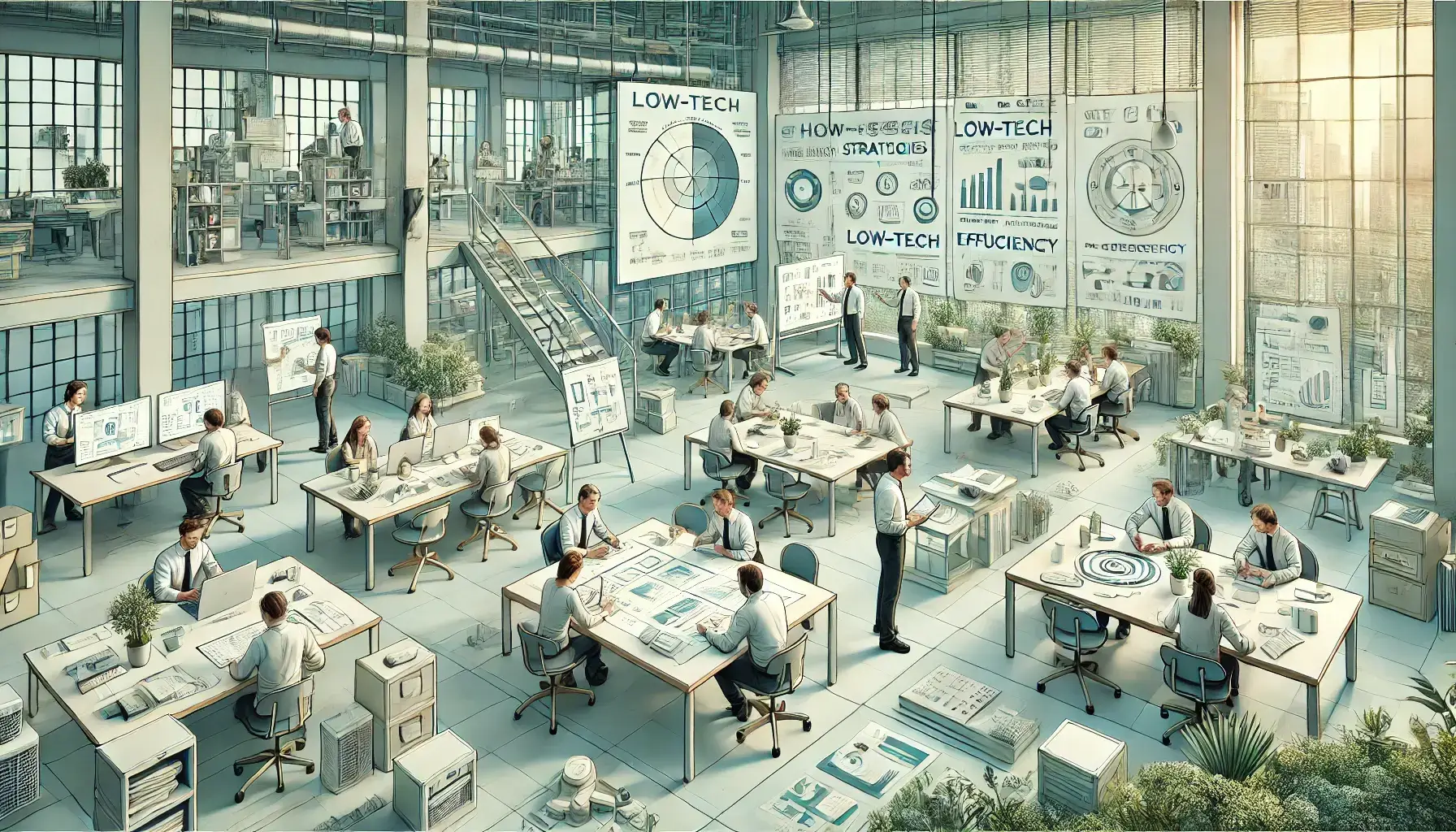
For companies whose operations have been designed with technology at its core, a transition towards low-tech can be counterintuitive. Nevertheless, many companies have been able to combine low-tech strategies with efficiency and profitability. What one must do is find an apt mix between technology that is a necessity and thoughtful simplicity, such that operations can become scalable but yield an unspoiled, human-touch sort of an experience.
One way to transition towards low-tech strategies is to simplify processes in a digital environment and restrict technology use when it doesn’t add value. For example, many companies have eliminated AI chatbots for customer service and returned to real, flesh-and-blood service teams. In most cases, chatbots have a purpose, but many customers prefer to work with a real person who can provide them with personalized service. Organizations like Zappos and Ritz-Carlton have developed loyal customers through a focus on interpersonal contact over robotic feedback and have shown that technology-free service can become a competitive advantage.
Another way that companies can go low-tech and yet not sacrifice efficiency is through offering alternatives to their goods and services in a non-digital form. Examples include offering calendars in book form in place of productivity software, photographs taken with an analog camera in place of smartphone camera lenses, and traditional coffee brewers in place of high-tech machines. By offering a dual alternative between ease and a conscious, hands-on activity, companies can cater to both modern and simple buyers and not price out any portion of their base out of business.
Additionally, companies can make a transition towards a low-tech model in marketing approaches. Some brands have reduced social media algorithm and web ad use and have transitioned towards face-to-face community relations, word-of-mouth marketing, and print advertisement. For example, Patagonia and Everlane have built strong loyalists through investing in narrative, ethical transparency, and experiential marketing, and not through web ad targeting alone.
Finally, businesses can structure work spaces to allow for a low-tech environment, creating healthier, more productive work spaces. Some companies have started to implement no-meeting days, technology-free brainstorms, and technology-free work spaces to allow workers to work intensively, work collaboratively effectively, and minimize screen burnout. This transition towards a less complicated, less distracting work environment has been proven to boost productivity, workers’ happiness, and overall productivity.
The most successful low-tech companies are not discarding technology but, in a calculated manner, choosing when to drop technology and when to amplify real-life, face-to-face experiences. DM WebSoft LLP assists companies in finding a perfect harmony between cutting-edge efficiency and ageless simplicity, keeping them profitable and relevant in a changing marketplace forever.
Low-Tech in the Workplace: How Companies Are Redefining Productivity
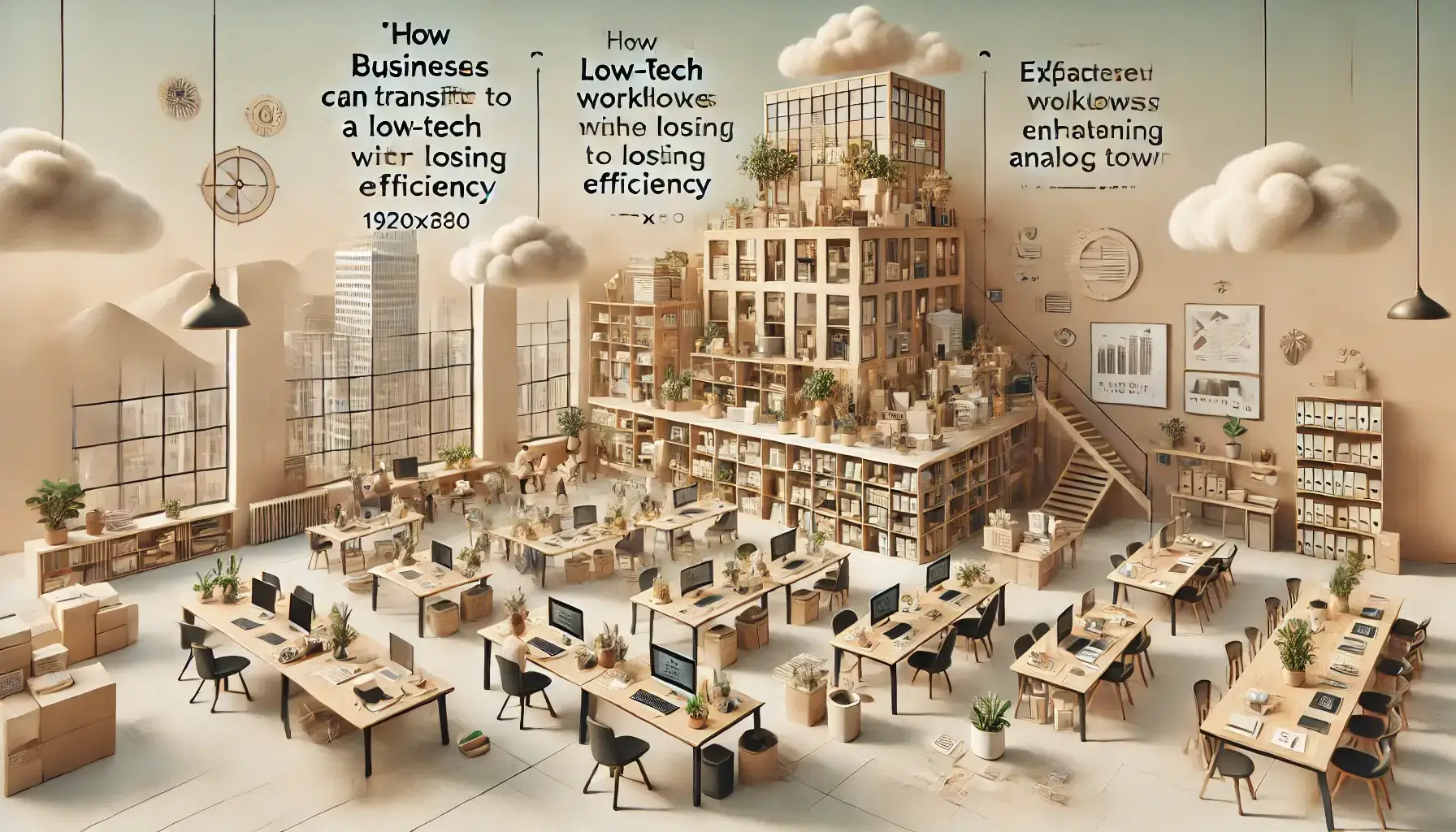
As businesses become ever more reliant on technology, AI-powered automation, and big-data analysis, an intriguing countertrend is emerging—companies cutting technology in the workplace in a quest to maximize concentration, imagination, and overall productivity. As technology can make processes run more effectively, overreliance on constant connectivity, real-time messaging, and algorithm-facilitated decision-making has generated heightened stress, virtual burnout, and lowered motivation for workers. In reaction, many visionary companies are moving towards low-tech strategies in an attempt to create healthier, more humane work cultures—and with beneficial financial and long-term repercussions.
One of the biggest low-tech workplace transformations is reducing digital distractions. Several companies have noticed that constant pings of email, successive virtual meetings, and over-use of collaboration tools actually discourage deep work and productivity. To counteract, companies have initiated no-meeting days, designated times for checking and answering email, and technology-free work spaces to enable unbroken, high-value work sessions. Shopify and Basecamp have gone public with such strategies, and in doing so, have attested that fewer unnecessary digital engagements yield work that is both effective and meaningful.
Another growing practice is a move towards traditional paper productivity tools. As much as everyone else is using computer calendars, AI scheduling software, and computerized reminders, many professionals prefer actual whiteboards, actual notebooks, and handwritten brainstorms for prioritizing and ordering information in a superior way. Handwriting information down proves to work in terms of recalling information, sparking heightened creativity, and creating deeper thinking about work. That is why many successful CEOs and entrepreneurs prefer to use Moleskine calendars, handwritten lists, and whiteboarding over computerized work management software.
In addition to minimizing unnecessary technology use, companies are also embracing natural, analog work spaces to promote workers’ overall well-being. Offices are moving towards biophilic spaces, with added use of natural light, plants, and low-tech shared spaces that allow workers to move off their screens and work with one another in a face-to-face manner. Tech-free work breaks have been added at a number of companies, with workers encouraged to go for a screenless stroll, read a book, or work with hands in a hands-on activity to revitalize and rejuvenate minds and lessen burnout.
Even workplace communications fall under examination in the low-tech revolution. Instead of, and even in addition to, Slack and infinite threads of email, companies are re-embracing face-to-face stand-ins for groups, walking meetings, and phone calls as a more efficient alternative for collaboration. Not only will it deepen interpersonal relations between workers, but it will lessen ineffectuality of electronic miscommunication, in which messages become confused and go off in a flood of alerts.
Perhaps the most important lesson of the low-tech workplace movement is that simplicity can actually promote increased efficiency, not decreased efficiency. Companies that simplify, remove digital clutter, promote deep work, and value real-life collaboration have discovered that workers become happier, more engaged, and, in fact, more efficient. DM WebSoft LLP assists companies in finding the proper harmony between digital efficiency and purposeful simplicity, allowing them to develop work environments that promote both employee happiness and commercial success.
Conclusion: Why the Low-Tech Movement is Here to Stay
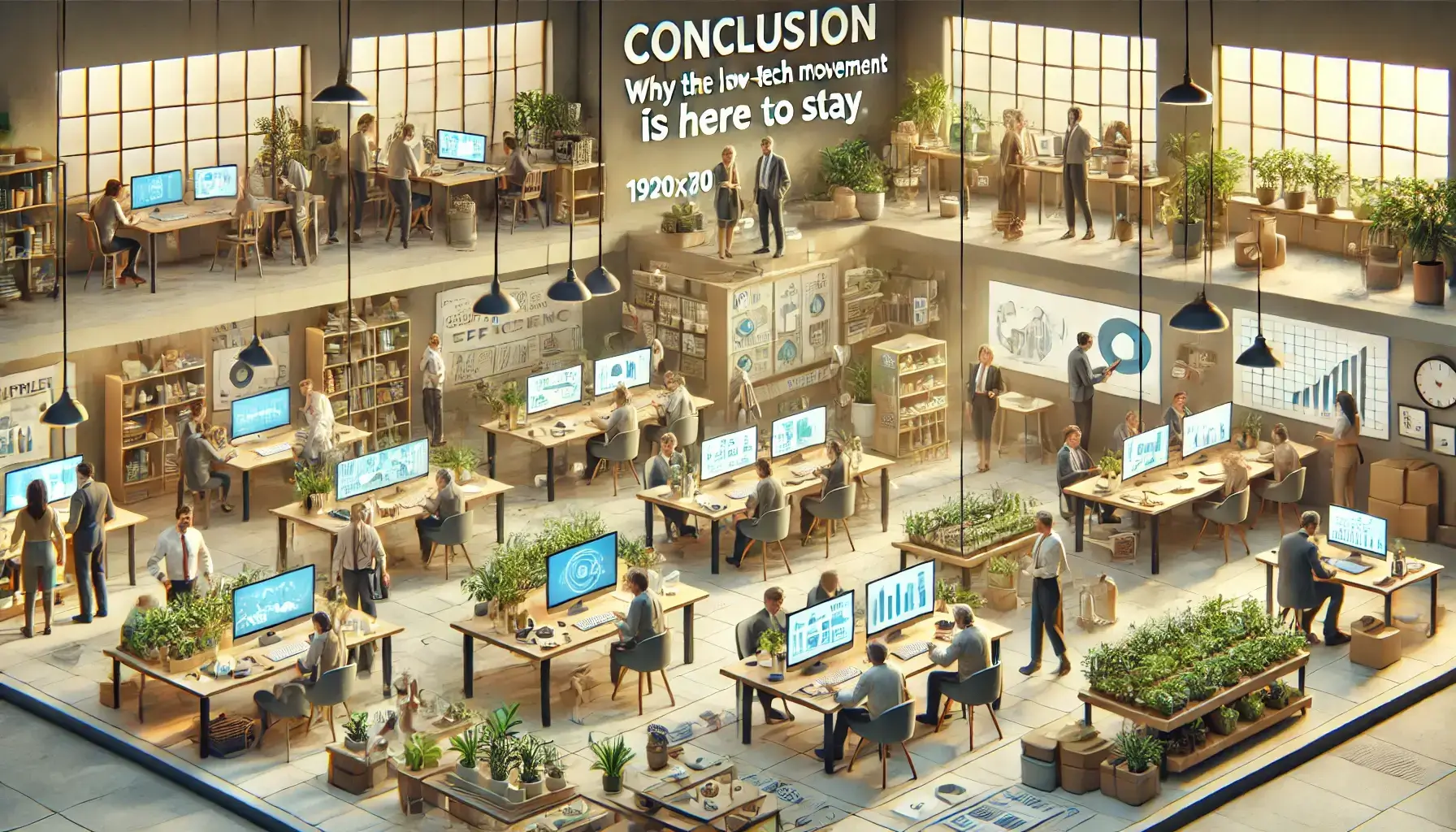
The low-tech revolution isn’t merely a reaction to burnout in an age of hyper-digitization – it’s a values realignment in its most fundamental form. As humans increasingly become disenchanted with constant automation, limitless alerts, and algorithm-enriched experiences, they’re actively searching for simplicity, authenticity, and face-to-face experiences. That’s opening up tremendous opportunity for companies with the courage to break free of overreliance on technology and move towards experiences that have a human at its heart.
Companies that have embraced purposeful minimalism—be it in terms of handmade products, analog experiences, or technology-free wellness offerings—proved that less can actually sell. Consumers will pay a premium for experiences and goods with substance, integrity, and a break from information overload. With vinyl record sales and analog photographs enjoying a new boom, and with wellness companies and retreats with a minimalist theme enjoying success, companies prioritizing substance over efficiency and humans over machines are thriving.
This movement isn’t one of rejecting technology but one of wisely using it—technology as a tool for enhancing, not a replacement for real experiences. Organizations that can make an ideal balance—leveraging technology when it adds value but trimming it out when it deprives and takes away and derails the human experience—will differentiate in a crowded virtual marketplace.
At DM WebSoft LLP, we work with companies at both ends of the spectrum—be it in terms of leveraging cutting-edge AI technology or taking a ride in high-value, technology-neutral experiences. That companies have gone low-tech and earned millions is a success in its own right, and it shows that sometimes less is actually more.
As the low-tech movement continues to gain momentum, one reality stands out: future business isn’t about yet more technology, but about experiences that work better.
Companies are going low-tech because consumers are overwhelmed with digital fatigue and crave authentic, real-world experiences over constant automation.
Industries such as vinyl records, film photography, handmade goods, wellness retreats, and minimalist fitness brands are thriving in the low-tech business model.
No, the demand for simpler, distraction-free experiences continues to grow, making the low-tech movement a long-term consumer shift rather than a short-lived trend.
DM WebSoft LLP helps businesses balance technology and simplicity, ensuring that they leverage digital tools strategically while capitalizing on consumer demand for authentic, low-tech experiences.
Get Started Now !
What’s the Process ?
Request a Call
Consultation Meeting
Crafting a Tailored Proposal
Get Started Now !
Real Stories, Real Results. Discover What Our Clients Say

Working with DM WebSoft LLP was a game-changer for our business. Their technical prowess and innovative solutions transformed our online presence. A highly recommended web development agency with a stellar track record.

We are thrilled with the results DM WebSoft LLP delivered. Their deep understanding of web development coupled with years of expertise ensured a seamless and visually stunning website. True professionals!

In a digital age where first impressions matter, DM WebSoft LLP crafted a website that speaks volumes. The team’s attention to detail and commitment to quality set them apart. Thank you for making our vision a reality.

DM WebSoft LLP’s team demonstrated unparalleled expertise. Their ability to navigate complex technical challenges with ease is truly commendable. Choosing them for our web development needs was the best decision.

Exceptional service, unmatched skills! DM WebSoft LLP stands out as a leading web development agency. Their collaborative approach and commitment to excellence make them our go-to partner for all things web-related.

DM WebSoft LLP turned our ideas into a digital masterpiece. The seamless communication and timely delivery of our project showcased their professionalism. Highly impressed with the level of creativity and skill.

Our experience with DM WebSoft LLP was nothing short of amazing. From concept to execution, their team provided top-notch web development services. A reliable partner for businesses looking to elevate their online presence.

DM WebSoft LLP’s team of tech experts is second to none. Their wealth of experience reflects in the quality of their work. Our website not only meets but exceeds industry standards, thanks to their dedication.

Choosing DM WebSoft LLP was the best investment for our web development needs. Their team’s proficiency, coupled with a customer-centric approach, made the entire process smooth and enjoyable. A pleasure to work with!



